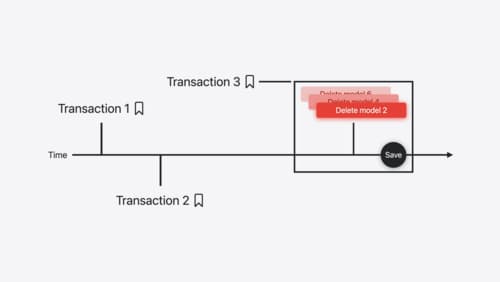whats new in swift data
Asked on 2024-08-07
1 search
What's New in Swift Data
Swift Data has introduced several new features and improvements to enhance data modeling, persistence, and querying capabilities. Here are the key updates:
-
Custom Data Stores:
- Swift Data now supports custom data stores, allowing you to use alternative backends like SQLite, remote web services, or even collections of JSON files. This flexibility enables the use of Swift Data's API with various storage solutions (Platforms State of the Union).
-
Schema Macro:
- A new schema macro helps avoid duplicate models, making it easier to set up and configure model containers (What’s new in SwiftData).
-
Index and Unique Macros:
- The
indexmacro improves query efficiency by indicating which properties are commonly queried together. - The
uniquemacro ensures that a set of properties has no duplicate entries (Platforms State of the Union).
- The
-
History API:
- Swift Data now provides access to the history of changes in a datastore, making it easier to track local changes that need to be synced to a remote web service (What’s new in SwiftData).
-
Previewable Macro:
- The new
previewablemacro works well with Swift Data, facilitating easier query work while iterating on views (Platforms State of the Union).
- The new
-
Custom Store Implementation:
- Adopting a custom store in Swift Data is straightforward with the new datastore protocol, which supports any persistence backend (Create a custom data store with SwiftData).
-
Modeling and Migration:
- Swift Data continues to provide robust support for modeling, migration, graph management, and synchronization with CloudKit (What’s new in SwiftData).
Relevant Sessions
- Platforms State of the Union
- What’s new in SwiftData
- Create a custom data store with SwiftData
- Track model changes with SwiftData history
These sessions provide a comprehensive overview of the new features and improvements in Swift Data.

Platforms State of the Union
Discover the newest advancements on Apple platforms.

Track model changes with SwiftData history
Reveal the history of your model’s changes with SwiftData! Use the history API to understand when data store changes occurred, and learn how to use this information to build features like remote server sync and out-of-process change handing in your app. We’ll also cover how you can build support for the history API into a custom data store.

Create a custom data store with SwiftData
Combine the power of SwiftData’s expressive, declarative modeling API with your own persistence backend. Learn how to build a custom data store and explore how to progressively add persistence features in your app. To get the most out of this session, watch “Meet SwiftData” and “Model your schema with SwiftData” from WWDC23.
